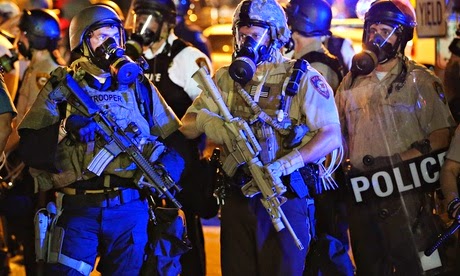Ferguson is a story going back decades
Ferguson is a story going back decades. And there is no new
ending
Tensions
between police and residents in Ferguson have run high since the death of
teenager Michael Brown. Photograph: Scott Olson/Getty Images
The story of Ferguson, Missouri, goes well beyond the tragic
murder of a young black man. It is a story about demography and race going back
to the great migration out of the south when many northern cities absorbed
hundreds of thousands of African Americans over the course of only a few
decades, creating the conditions for severe racial tension. Newly arrived black
people competed for housing, land, schools and jobs with a range of white
ethnic groups, many of whom bonded to suppress the "threat" from the
new population.
The story of racial conflict that emerged in the 20th
century north is well documented in histories written by Isabel Wilkerson about
the migration northward, by Tom Sugrue about the decline of Detroit, and by
Arnold Hirsch about the south side of Chicago. These and other urban histories
describe how formal laws and policies were developed to maintain racial
separation by restricting where black people could live and work, and how violence
and intimidation were used when these explicit policies were not sufficient.
Control over the local political structure, and the police, were essential in
this effort. The historian Khalil Gibran Muhammad has documented the way that
city police departments reinforced racial order in northern cities by actively
targeting African Americans. Sociologist Christopher Muller has shown that
racial disparities in rates of arrest and incarceration began to emerge in the
places that were absorbing the greatest number of black people, and during
periods when the black population was expanding most rapidly. Read more >>




Comments
Post a Comment